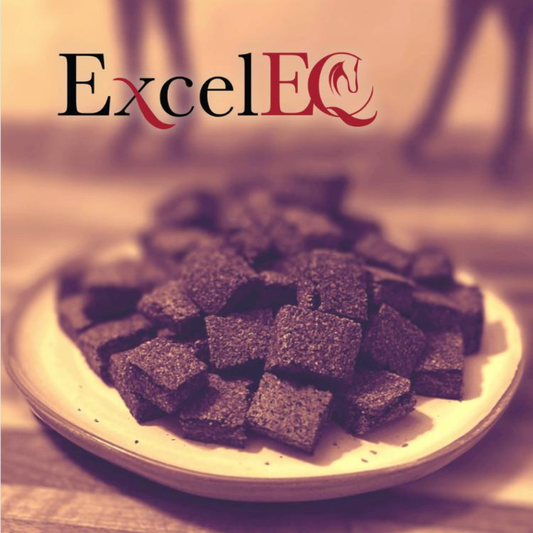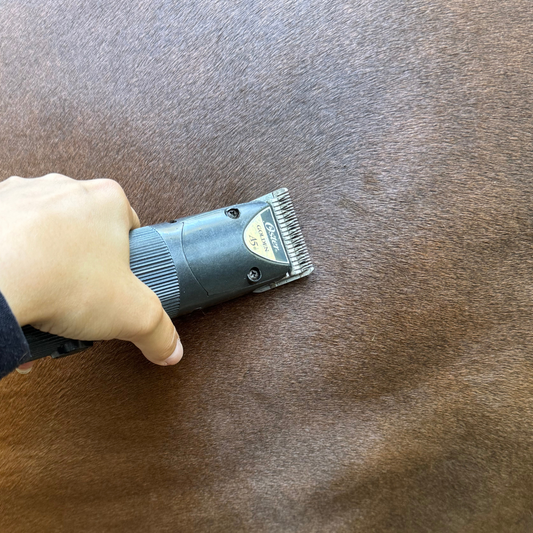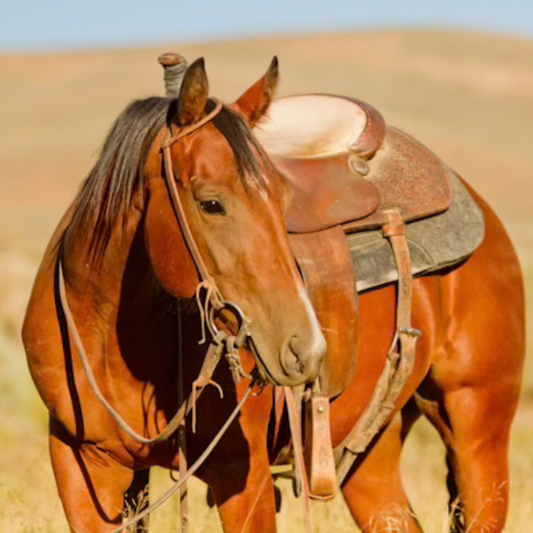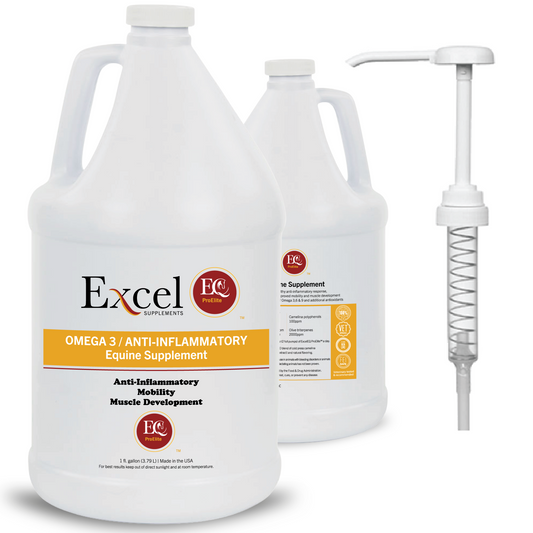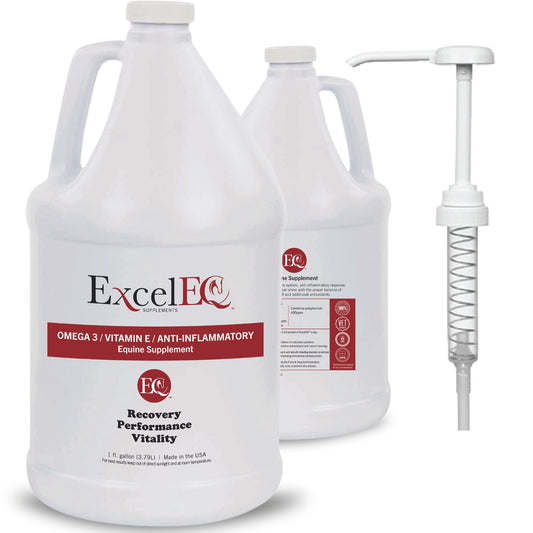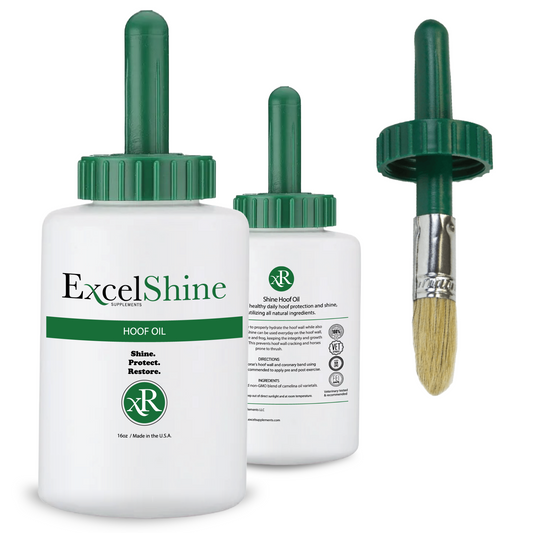Managing Equine Cushing’s Disease - Beau’s Story Part II
Share
In part one, Beau experienced early symptoms of Cushing’s Disease. What started with symptoms of lethargy, difficulty losing weight, and struggling to gain muscle quickly turned into laminitis. After blood work was sent out, Beau received a positive Cushing’s diagnosis. We discussed what Equine Cushing’s Disease is and the changes a horse needs to make to allow them to live a pain free life.
Cushing’s in Horses
Beau was doing exceptionally well with living with Equine Cushing’s Disease. Managing his weight was a task I had to learn, but almost all the symptoms were gone or decreased in severity. I made the move to a new barn in March of 2020 that suited both of our needs. Unfortunately, Beau’s pasture went from a 1.5-acre dry lot to a 10-acre field. It should be a paradise for Beau, for him to have space and to only share it with two other horses. However, with Beau’s Cushing’s it is incredibly difficult for him to metabolize the sugars in the grass. In October of 2020, the progress we had made hit a wall. Unfortunately, I received a phone call that my barn manager discovered that Beau was showing signs of lameness.
Laminitis and Cushing’s in Horses
Compared to Beau’s lameness in part 1, this was incredibly severe. His lameness was severe to the point Beau did not come up for his morning feeding. The same veterinarian that diagnosed Beau was able to visit immediately and examine him. She stated that once again Beau was showing signs of severe laminitis. She thought Beau's high insulin was the cause that could explain his laminitis. Additionally, Beau’s lack of ability to metabolize the sugars and the Fall’s grass containing above average sugar caused him to gain an unhealthy amount of weight. The laminae in his hooves were severely inflamed, and the concern my veterinarian had was about the coffin bone rotating. With the initial examination, we were agreeing on which treatment options we could utilize for Beau.
Treatment for Laminitis in Horses
My veterinarian recommended placing him on strict twenty-four hour stall rest with deep bedding. This was due to the fact that the threat of coffin bone rotation was high. She also prescribed anti-inflammatory medication to relieve Beau’s pain and inflammation. Additionally, she recommended cold water hosing on his hooves daily to reduce the inflammation in his laminae. We also soaked his hay in water to limit his intake of sugar and starch. I documented any changes by taking videos and sending them to my veterinarian daily. Since she became concerned about Beau’s coffin bone, she wanted to observe if he could make progress with her treatment plan.
Diet in Cushing’s Horses
Beau’s progress was slow but any progress was a positive outcome. This is due to the fact that his laminitis did not advance into coffin bone rotation. Removing him from the lush grass in his pasture and controlling his food intake was vital to his recovery. His only diet became soaked grass hay as we eliminated feed completely to remove as much sugar and starch as possible. Every night that I medicated Beau, I would use an oral syringe to give him his anti-inflammatories and Cushing’s medication. Understanding the diet requirements needed for Beau was one of the factors that allowed Beau to recover.

Hoping for Laminitis Recovery
Observing his slow progress and his pain daily, I felt beyond frustrated and upset. It was difficult to spot any significant progress unless you compared it to the video of the week prior. I remember spending many late nights just staring at him in his stall and hoping he would recover. Beau being in pain is not how I wanted to end our story. After some difficult nights, I wrote down a couple of goals I wanted to complete if Beau became fully sound. Traveling to a public trailhead to go on a trail ride was my number one goal. Every time I felt upset, I thought about our possible future trail ride.
Laminitis Recovery
With the help of my veterinarian and my barn manager, Beau started to show progress. After almost three weeks of strict stall rest, placing him in a dry lot/pasture mix was the next step. The main concern was how much grass he could receive. We moved him into the dry lot on a restrictive forage diet. He was in the dry lot for half of the day in the afternoon and into the pasture at nighttime. My veterinarian cleared us to start feeding Beau his low sugar and starch feed daily with his Cushing’s medication. We continued the amount from before at .75 quarts a day. If I noticed him gaining weight I placed a grazing muzzle on him when he was in pasture turnout.
Exercise and Recovery After Laminitis
More than a month after the initial signs of severe laminitis, I was finally able to ride him. It was at a walk for ten minutes, but I was beyond grateful. We slowly increased the exercise and focused on getting him to the goal I had made. During his time spent on stall rest, Beau lost a large amount of muscle mass. Focusing on hill training on trail rides and circles through arena work helped him gain his muscle back slowly. Almost four months later, he had enough muscle and stamina that we were able to ride at a public trailhead. Despite going only a mile, I was so appreciative to be there. With time, Beau has become easier to manage living with Equine Cushing’s Disease.

